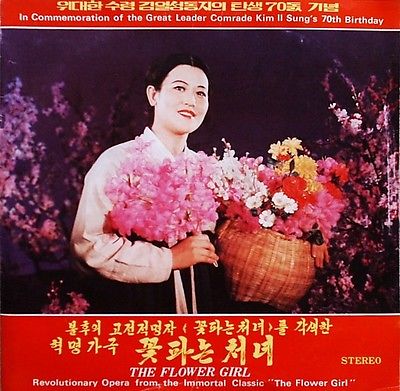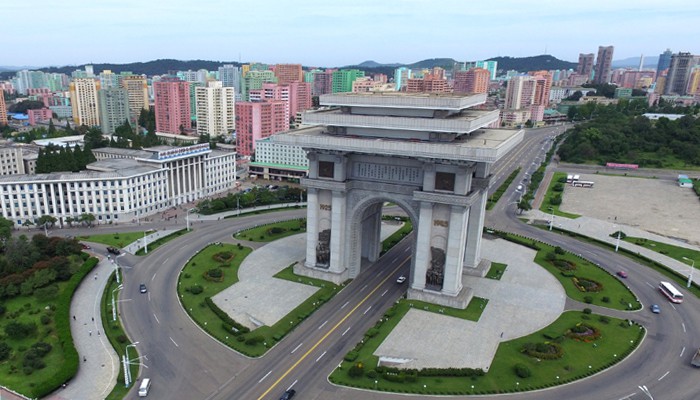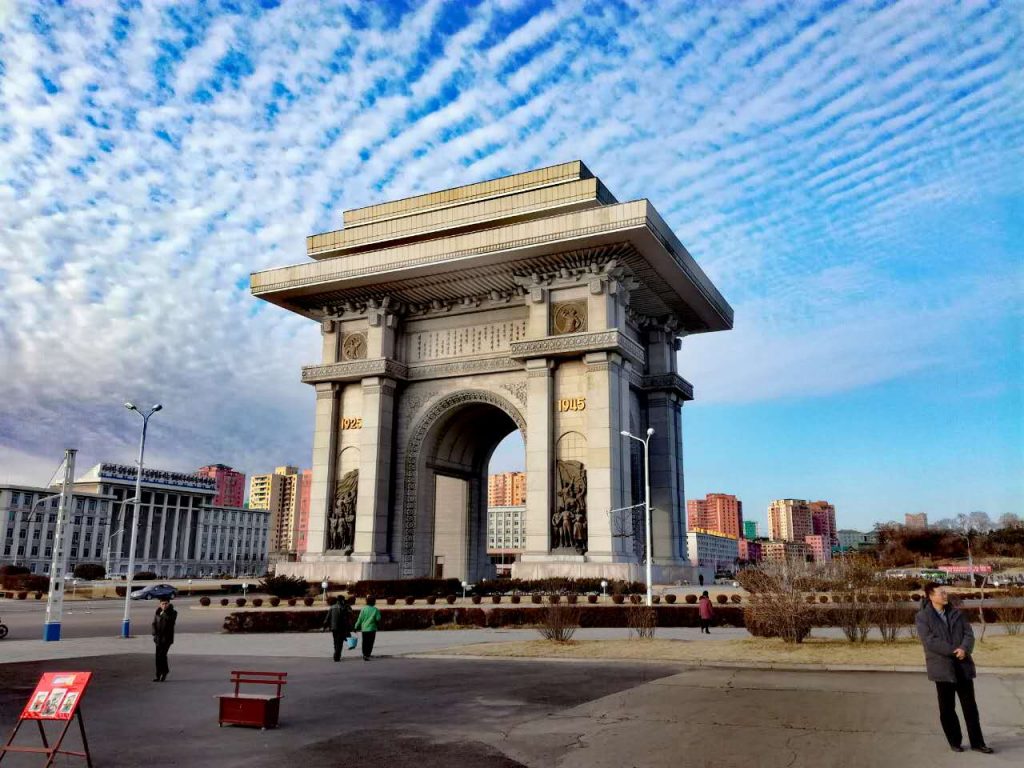Introduction
The North Korean Arch of Triumph (개선문), standing at the foot of Moran Hill, is one of Pyongyang’s most iconic landmarks. The stone archway has a total height of 60 metres with a width of 50.1 meters and was completed on 15th April 1982 for the occasion of President Kim Il Sung’s 70th birthday commemorating his role in the “Anti Japanese armed struggle and triumphant return home”.
The Arch of Triumph has a striking resemblance to the Arc De Triomphe in Paris for which it was modelled after, but it is 11 meters higher than its Parisian counterpart. Taking heavy influence from Neo-classical styles, the Arch of Triumph was built with 25,500 white granite blocks. Each white granite block is said to represent one day of Kim Il Sung’s life up till the opening of the monument.
On the lower parts of the four pillars of the Arch stand carved sculptures that show Farmers, Workers, Intellectuals, and Soldiers from the Korean Revolutionary Army. The Farmers, Workers and Intellectuals would become the main pillars of the Workers Party of Korea, and the Korean Revolutionary Army would become the Korean Peoples Army. Above the statues are two meaningful years in North Korean history which are 1925 and 1945.
The significance of the Arch of Triumph
As stated by Kim Il Sung’s official autobiography, Kim Il Sung left his native home of Mangyondae in 1925 and vowed not to return home until he had won his country’s independence over the Japanese who had annexed Korea.
The 1945 on the Arch of Triumph represents Kim Il Sung’s return to Pyongyang on October 14th, 1945, at the end of World War II and the speech in which he gave at Kaeson Revolutionary Site next to where the Arch of Triumph would later be.
The speech was titled “Every effort for building a new democratic Korea”. The speech was attended by around 300,000 people and was the first chance for many North Korean’s to see their new leader in person. A quote from Kim Il Sung’s speech was carved into stone at the site which reads “To contribute positively to the work of building the state, let those with strength give strength, let those with knowledge give knowledge, let those with money give money”.
Azalea Flowers
The picture below is a special commemorative edition featuring the Azalea flower of the Flower Girl’s Soundtrack released as apart of Kim Il Sung’s 70th Birthday Celebration. The plot of the Flower Girl is centred around a poor, rural girl, who picks flowers on the mountain every day to sell at the market, to care for her ill mother during the time of Japanese occupation.

The Archway has a rainbow made out of 70 Azalea Flowers. The 70 Azalea Flowers again represent the 70th Birthday of Kim Il Sung and is said to show the wish of good health to Kim Il Sung from the Korean people. The Azalea flower has strong symbolism in North Korea for its association as an image in the anti-Japanese Colonial Rule and struggle.
The Song of General Kim Il Sung
On the upper surfaces of the Arch of Triumph are the engraved words of Song of General Kim IL Sung. The Song of General Kim Il Sung was composed by Kim Won-Gyun in 1946 and remains one of the most important songs in North Korea.
On the east and west side of the Arch of Triumph Mt Pakektu is considered the most sacred mountain in the DPRK.
Visiting the Arch of Triumph
All of our group tours to North Korea will have a photo opportunity at the outside of the Arch Of Triumph after taking a ride on the Pyongyang Metro. There is an observation deck at the top of the monument and is possible to visit for 2 euros or 15RMB. This ticket is purchased directly at the Arch of Triumph.
If you decide to go to the top you will be treated to stunning views of the surrounding area including Kim Il Sung Stadium, Moran Hill and the Ryugyong Hotel. There is also a documentary of the construction that can be viewed within the large hall built into the top of the monument.








